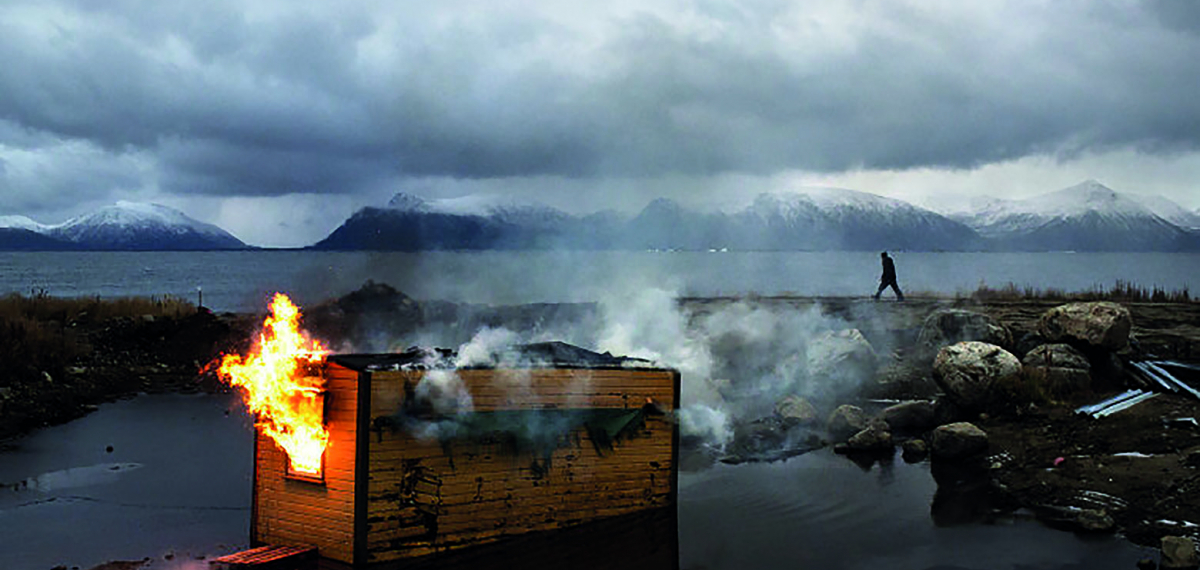Presentation
Norway - Born in 1977
Big Melt followed by Vesteraalen News
In 60 years, China’s largest glacier in the Qilian Mountains has retreated some 500 metres. The same phenomenon has been observed on most of the 40,000 glaciers perched atop the world’s highest peaks around the Tibetan plateau. These glaciers make up the largest freshwater reserve in the world, forming the headwaters of mythical rivers such as the Indus, Mekong, Yangtze and Ganges. In all, more than two billion people depend on this water to survive. Here, rising water levels do not come from below, as is the case with the melting of the two ice caps and the Arctic, but are instead descending from the Roof of the World. Last February, a glacier that broke away from the Himalayas led to the death of ten people and the disappearance of a hundred others. An incident that is just the tip of an iceberg that is melting before our very eyes.
Norwegian photojournalist Jonas Bendiksen, who regularly features in National Geographic and has been a member of the Magnum agency since 2004, has documented this ecological disaster that is threatening an entire way of life: from the flanks of the Himalayas to the gigantic cities reminiscent of ant hills with their soaring demographics. A rigorous observer of the turmoil in our changing world, Bendiksen is also the quiet scribe of a much calmer daily life. In Vesterålen, for example, in the north of his home country of Norway, where he was hired by a local newspaper and produced an intimate body of work that brilliantly captures the atmosphere and identity of this remote region and its inhabitants. This exhibition juxtaposes these two series and their diametrically opposed focal points.
JARDIN DU RELAIS POSTAL

© Jonas Bendiksen / Magnum photos / Vesteraalen News series

Photo gallery
Exhibition

In 60 years, China’s largest glacier in the Qilian Mountains has retreated some 500 metres. The same phenomenon has been observed on most of the 40,000 glaciers perched atop the world’s highest peaks around the Tibetan plateau. These glaciers make up the largest freshwater reserve in the world, forming the headwaters of mythical rivers such as the Indus, Mekong, Yangtze and Ganges. In all, more than two billion people depend on this water to survive. Here, rising water levels do not come from below, as is the case with the melting of the two ice caps and the Arctic, but are instead descending from the Roof of the World. Last February, a glacier that broke away from the Himalayas led to the death of ten people and the disappearance of a hundred others. An incident that is just the tip of an iceberg that is melting before our very eyes.
Norwegian photojournalist Jonas Bendiksen, who regularly features in National Geographic and has been a member of the Magnum agency since 2004, has documented this ecological disaster that is threatening an entire way of life: from the flanks of the Himalayas to the gigantic cities reminiscent of ant hills with their soaring demographics. A rigorous observer of the turmoil in our changing world, Bendiksen is also the quiet scribe of a much calmer daily life. In Vesterålen, for example, in the north of his home country of Norway, where he was hired by a local newspaper and produced an intimate body of work that brilliantly captures the atmosphere and identity of this remote region and its inhabitants. This exhibition juxtaposes these two series and their diametrically opposed focal points.
JARDIN DU RELAIS POSTAL








